Just as with old churches, I am equally fascinated and doubly charmed by old houses. It pleases me even further when they are still inhabited by descendants of the original owners and not converted into a government office or restaurant or what-have-you. I still think about all those gorgeous ancestral homes in Silay (Negros Occ.) and how much I regret not setting aside time from work to venture beyond some of those iron gates, managing only to admire them from across the road or through the car’s dusty window.
So to say that exploring the ancestral homes in Bohol was a treat for me would be a gross understatement. It was quite the honor. When you cross the threshold of an ancestral home, you are never just a tourist satisfying a curiosity. You are, above all, a guest of the family and of their forefathers.
We learned much of what we know about the BAHANDI or Baclayon Ancestral Homes Association from our lovely hosts at the Mendez Homestay, but also from a lady we met who operates a homestay of her own. It was in her living room where she recounted how the ancestral homes along the main highway were threatened by demolition due to a road-widening project. So in 2002 the BAHANDI (bahandi is actually Visayan for treasure or inheritance) was founded to protect these homes. Thanks to their tireless efforts, not only were the beautiful houses spared from the wrecking ball, but so was the cultural heritage of Baclayon. Today the BAHANDI continues to organize local cultural events, support locals engaged in traditional arts and crafts, conduct educational campaigns on culture and history in schools, and advocate the preservation of historic buildings.
Everything in the house tells a story. Even the width of the hardwood floor planks reveals the wealth of the family (the wider, the wealthier). But best of all are the stories you weave together from the personal mementoes left behind by generations past: the frayed baros carelessly hung on the walls; the worn piano keys and chess sets; framed portraits and sepia-toned photographs, rickety furniture you wouldn’t dare sit on; gorgeous aparadors next to canopied beds, doilies underneath antique porcelain figurines; religious icons that came in sizes smaller than my thumb to taller than my 6 ft. dad; books that threatened to trigger my allergies if I so much as lay a finger on them; vintage green and amber glass bottles, chipped clay pieces, walking canes and other odds and ends.
Most of the houses are of typical bahay-na-bato design, with the use of stone limited to the lower level for the foundation. The upper levels are built using wood, bamboo and other native materials. A staircase (a showcase in itself) leads you up to the large and airy main room with high ceilings. This is the most important part of the house serving as both dining and living area, and from where large doors lead into the bedrooms and the kitchen. Window sills with sliding capiz & wood shutters make up most of the upper level facade with shuttered ventanillas (smaller windows) just below it decorated in pretty iron grillwork.
I appreciated the quiet grandeur of these stately homes; devoid of the lavishness that most ancestral houses elsewhere display. But I appreciated even more the respect the locals have of the gifts of the past and the pains they've taken to preserve them. With the mass development of suburbs all over the country boasting of modern and western designs, I take comfort in knowing that houses like these which make up our national identity are fiercely protected.
So here are the Baclayon ancestral homes we had the pleasure of visiting. The information I'm providing here is taken from chats with members of the family supported by facts found in the BAHANDI 2008 calendar. Each house is as unique as the stories they tell. Instead of trying to describe each one in detail (I'd have to dedicate a whole post per house if I did), I'll let the pictures do the talking, in the hopes that you are treated to an enticing sneak preview at the very least.
1. The Malon House is currently the home of 6th generation Malon family and was the site of many political meetings between former Pres. Carlos Garcia and Juan Malon who was then working at the municipal hall. It was originally T-shaped and built in the late 19th century, but the wing that extended into the sea was destroyed by a typhoon in 1968. The house had a large and sunny living room where I found amidst the timeworn sundries, chocolate tablea covered in dried leaves. Not a stranger to the delights of homemade tablea from the provinces, I asked if they were for sale and bought some to take home. It was a week later during a beach trip with friends that I used them up to make hot chocolate for everyone at breakfast and wished that I had bought more. (Poblacion; 2 Fan Rooms, 3 Beds at P600 per person. Contact: Ms. Cecile Camba 038-5409514 / 0910-3387033)
2. The Villamor House is one of the oldest ancestral houses in Baclayon, built by a trader, Ciriaco Villamor, in the late 19th century. The family lives in the Mangrove House (below) next door so the Villamor House serves mainly as a museum and homestay. From the kitchen window is a nice view of the mangroves and the Mangrove house. (Baliaut, Poblacion; 1 fan room/2 beds at P600 per person; Contact: Ms. Telly Ocampo 038-5409030 / 0920-2097558)
3. The Mangrove House is so called because the rear part of the house is built on stilts and is nestled in the mangroves. It is there in that hut above the murky waters where all BAHANDI meetings are conducted. To get to the hut on stilts, you pass through one of the most charming native kitchen I have ever seen (see bottom row of collage). (Baliaut, Poblacion; 1 Fan room/3 Beds at P500 per person; Contact: Ms. Telly Ocampo 038-5409030 / 0920-2097558)
4. The Luza House is a large turn-of-the-century home of influential local merchant Fortunato Luza and his wife Maria Ginete. It is currently the home of Boholano artist Lutgardo Labad (who I spied outside in his garden) and where one goes to buy the famous Mama Nena's La Boholana Ube Kinampay. To be honest, it was the ube we were there for. We weren't planning to see any more houses that day, but when we emerged from the Luza's garage with our ube loot, the sweet-looking lady of the house called out to us from where she sat at an upstairs window. She invited us in for a quick look-see and who were we to decline. Unlike the other houses which were situated along the water's edge, this one was across the street and so the view from the second floor was the sea. I imagined that husband and wife spent hours sipping their coffee at that table by the window. (Poblacion, 2 fan rooms/3 beds; P600 per person; Contact: Mr. Gardy Labad 038-5409464 / 0916-3611786)This last house, though not located in Baclayon and hence not part of the BAHANDI, is probably the most famous of all. It is the Clarin Ancestral Home in the town of Loay, not far from Tagbilaran City and en route to the Chocolate Hills. It was built in 1840 and was the home of Don Aniceto Velez Clarin, Bohol's first governor and his son Jose Clarin who was a former Senate president. The Clarin home was declared a heritage site by the National Historical Institute and is a must for visitors to the island. At the lower level is a coffee shop that extends to a peaceful garden, a perfect place to take a break from all the sight-seeing.
I've included the contact information for these homes should you be braver than I am (I'm a scaredy cat with an overactive imagination!) and would like to experience living in an ancestral home. If you'd like a list of the other homestays and their contact details, send me an email and I'll be happy to send it to you. :)
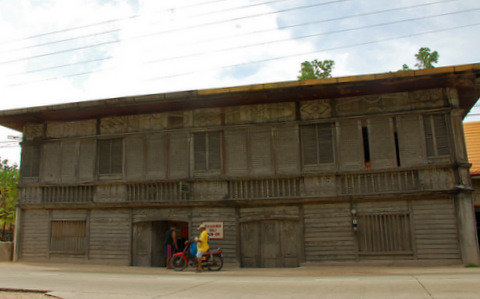

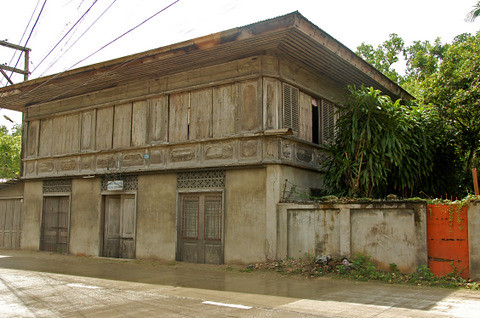
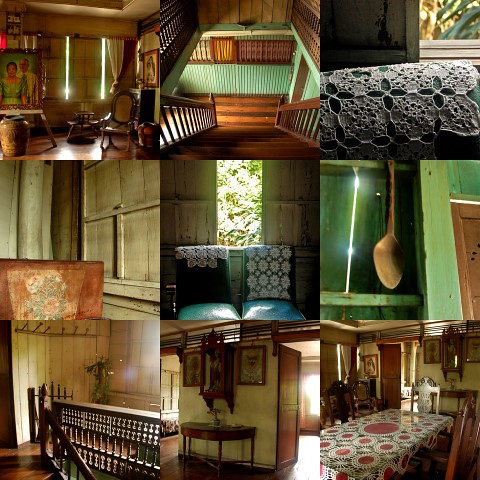
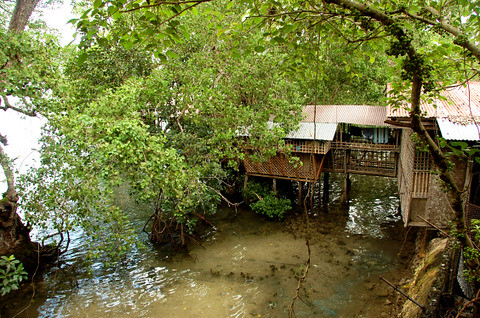
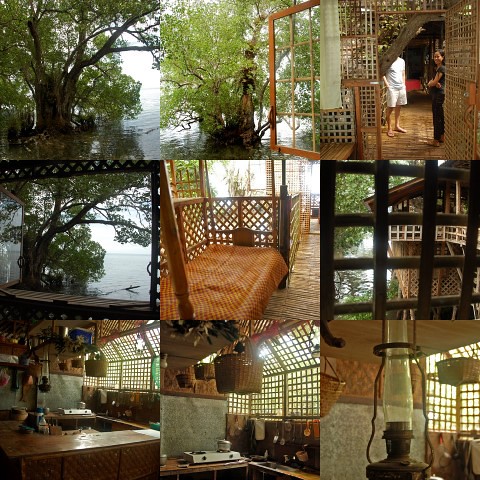


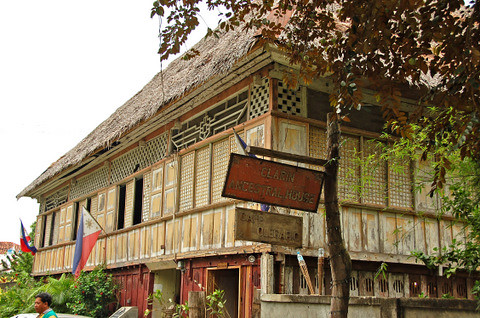
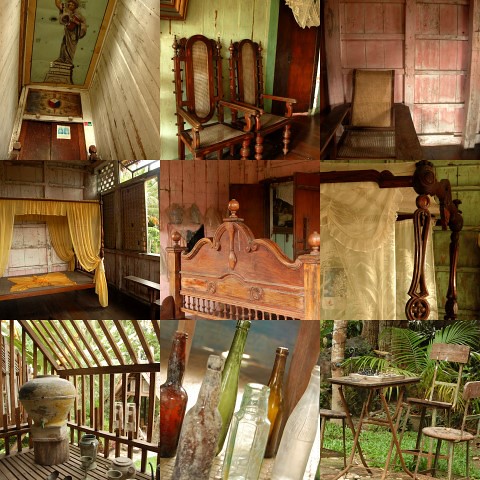
23 comments:
Beautiful post and pics, Christine. I especially love the staircases of the first two homes.
A week of living in each house would be a relaxing and relatively inexpensive trip. I'm glad you posted enough to titillate us with the possibility.
Thanks, Marvin! I really loved those staircases too! I took tons of photos of them actually. :)
Hi Mila, I don't know about relaxing for me haha, I don't know if I would last one night. I wish I wasn't this way cos I know I'm missing out. This is one of the reasons that until today I have yet to attempt a solo backpacking trip.
This is an interesting thing to try. Like you, I have an overly active imagination, so I would have to think hard if I want to stay in a house as old as these XD But yes, thanks for sharing the contact details! I would certainly consider trying a homestay :D
Pretty but I think I'd pass on staying in them. BTW, if ever you go visit Bacolod again, make sure to visit the Gaston house. I'm sure you'd love it there.
I love the houses, their achitecture and their histories IN THE MORNING.
Like you, I wouldn't dare stay in any of them. Not even for a night.
Last year when I was in Vigan, I had such a hard time looking for a place to sleep.
Everything was just old and spooky I wanted to cry.
Hi Nina! There are lots of homestays , also part of the BAHANDI, like the one I stayed in which aren't the least bit spooky because they are new houses. :)
Hi Em! That's the brown house that's been converted into a museum in Silay right? Yes,I've seen it but didn't have time to go in because I was there for work. I even took photos of it. I hope to go back someday on holiday so I have time to explore the beautiful Silay homes. :)
Haha, I would never have taken you for a scaredy-cat too, Ruy. ;)
But really guys, I don't want to discourage anyone from staying in these ancestral homes! They're not as spooky as they look/sound. I didn't "feel" anything while I was in any of them. :)
this is lovely. thanks for posting about bohol! although my dad's from there, i've only been a couple of times. next time we'll check out the houses you've mentioned. i love how cozy they look! but i don't know if i could stay in them. i've had a couple of bad 'ghostly' experiences in old houses.
You're right. Normal people should enjoy these treasures. Sleep in them, soak in their ancient stories and experience their history.
I'm just such a scaredy cat and I know that not being able to stay in these historic places is my loss.
So all of these except the last one operate as B&Bs? Very neat! Yes I am man enough to sleep there (ahem).
Hi Caryn! :) Yes, you would really enjoy visiting these houses which are museums in itself. It would be even more meaningful for you because your dad is from the island.
Haha Ruy, 'normal people' as opposed to us umm not-so-normal ones? ;) I agree!
Yes, all have at least 1 room for B&B/Homestays except the Clarin house. Ahem, ok , I believe you. ;)
I love this post. Yeah.. Bohol next for me.
Yes, Carlos, this is right up your alley so you should visit these homes if you haven't already. :)
Nice roundup!
Thanks, Bea! :)
Sorry for late comment, I didn't want to rush reading the Bohol posts so I only found time to go through them now. I'm not superstitious and not even sure I believe in ghosts, so that's not the reason I wouldn't stay in these ancestral homes. The fact is, I want airconditioning, hot water and modern plumbing, so I doubt I would want to live in these antique structures. Still, they really are beautiful. Also, we had opted to stay on Alona to experience Bohol's famous beaches. Maybe when we return, I'll visit more of the houses. We'll reverse each other's itineraries! ;-)
Katrina, true, many will probably opt out of staying in heritage homes for the same reasons you gave. We'll do a reverse of itineraries! I'm already booked at Amarela for Sept 19-21 and apart from the wedding, I plan to be a beach bum all weekend. :)
the pics are lovely christine! glad you enjoyed your trip to bohol ;-) my dad's from tagbilaran, but i've only ever been a few times.
i love how austere they look on the outside, yet when you step inside, you are assailed by all of those minty colors ;-) i love the fusion house (i.e., bahay na bato on the second floor and remodelled 60s-era gorund floor)
Thank you, Caryn! I'm excited to be going back in a couple of weeks. Maybe it's time for you to visit with your dad? :)
Love the photos. Thanks for posting about this. Didn't know homestays were available in Bohol.
Hi Christine :) Do you have a contact number for the Clarin Ancestral Home? I've heard that it only opens by appointment? We are bound to visit the place this week. :) Thanks!
Sorry Heidi, no I don't. But maybe you can get ti through Bohol's local govt website?
This won't succeed in actual fact, that is what I believe.
Post a Comment